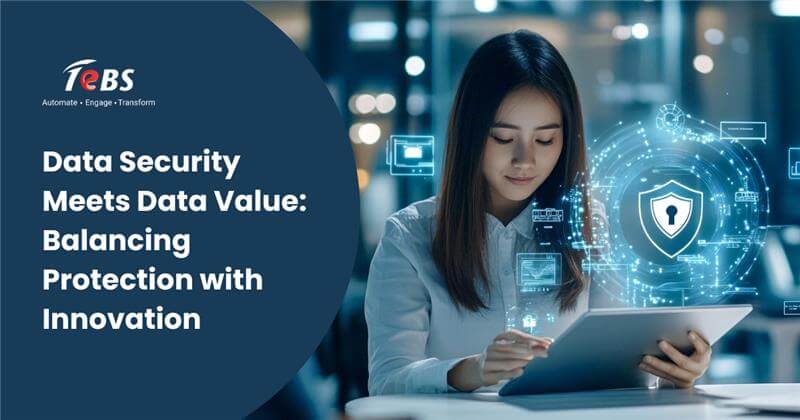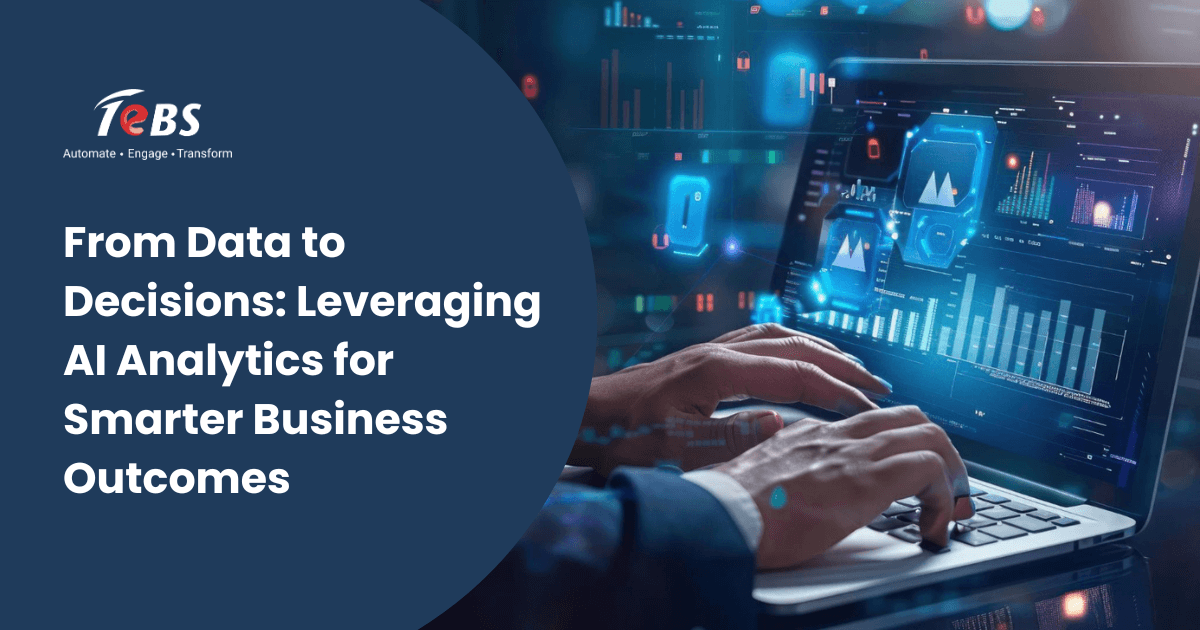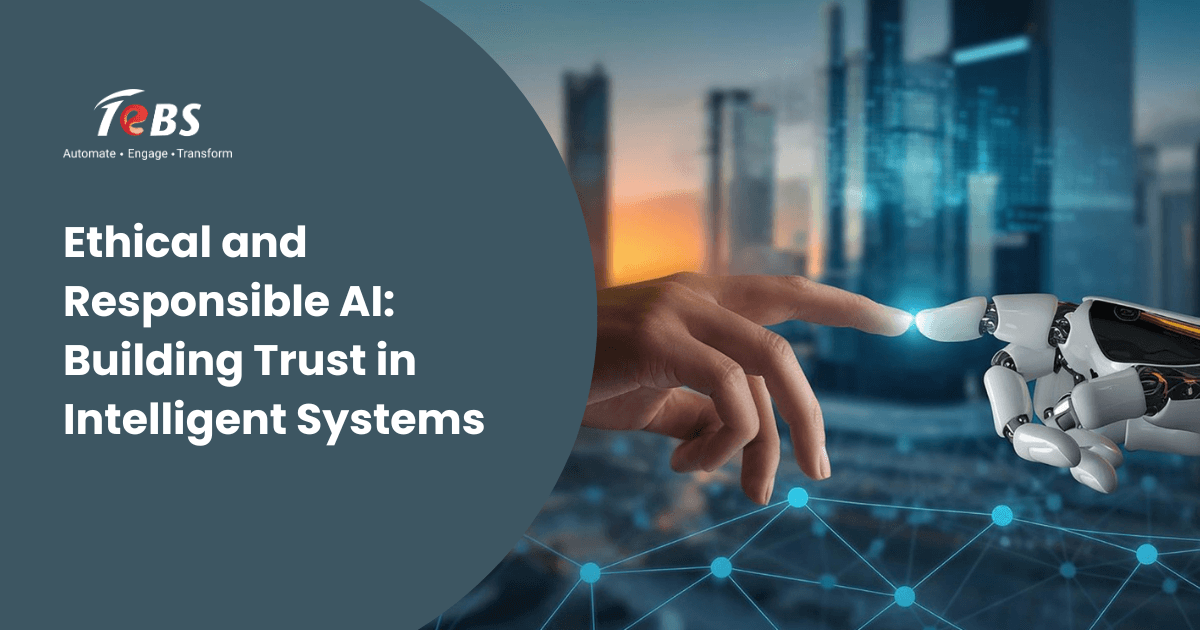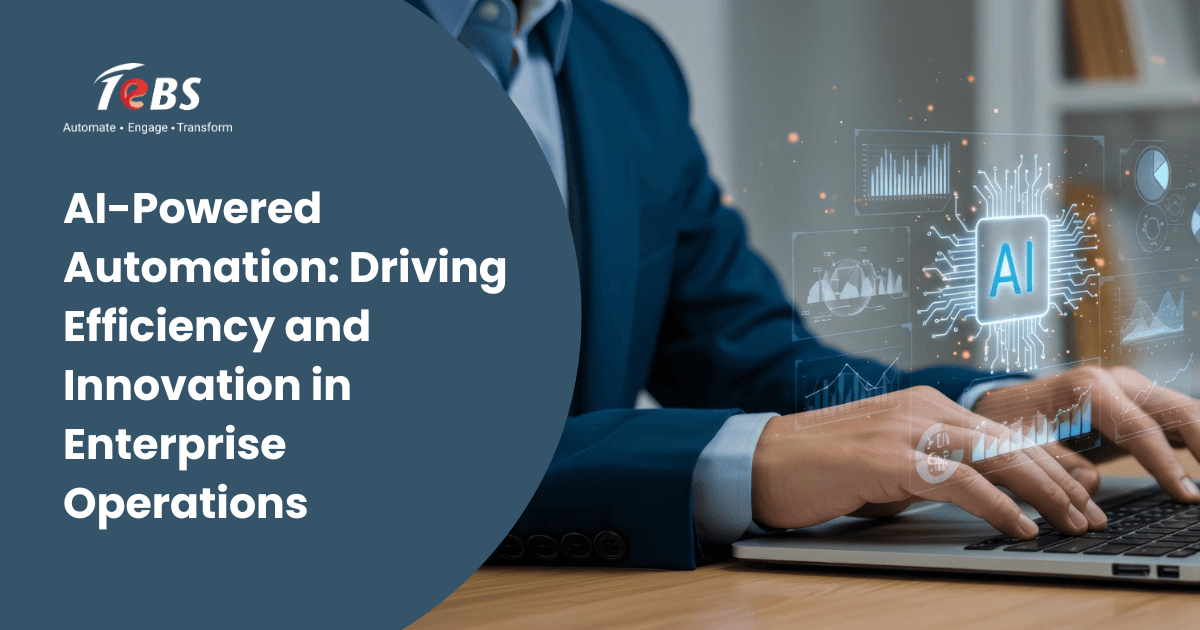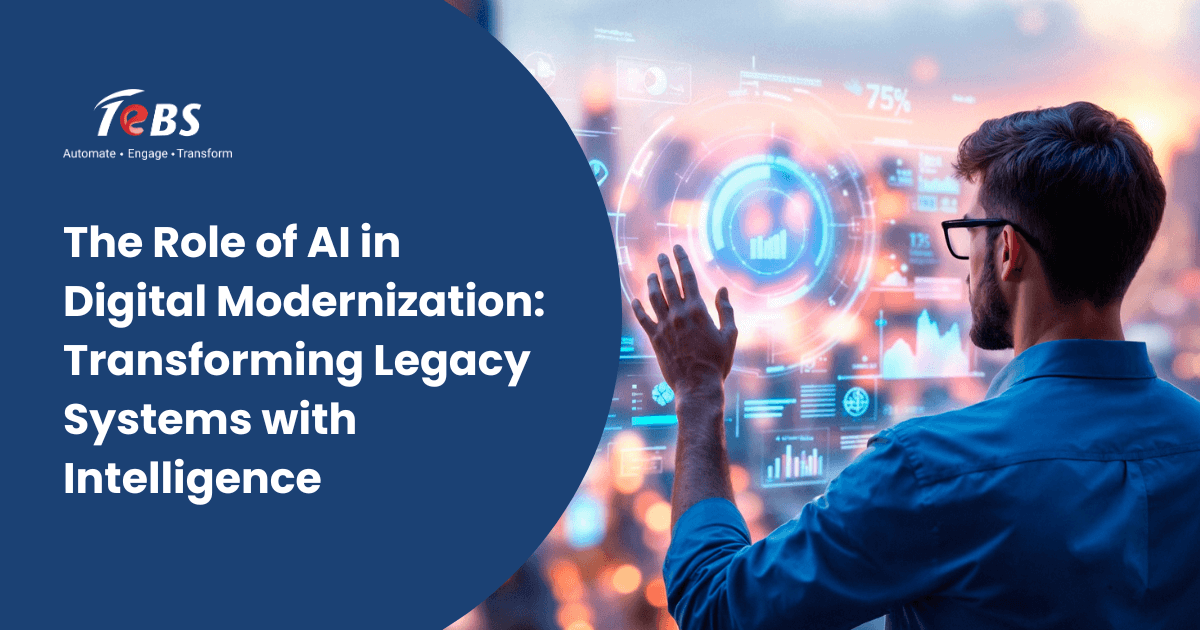Summary
Balancing data security with data value is essential for modern enterprises striving for innovation without risk. Through AI services, organizations can protect sensitive information while extracting actionable insights for growth and decision-making. TeBS enables this balance with AI-powered data security, AI-driven governance, and intelligent automation solutions that embed compliance and control into every data process. By integrating AI services into data management frameworks, enterprises achieve secure innovation, enhanced compliance, and sustained business agility — proving that protection and progress can coexist seamlessly.
Introduction: Striking the Right Balance
Enterprises today are tasked with managing vast amounts of data while ensuring it remains secure, compliant, and useful. The challenge lies in balancing protection with innovation—too much security can stifle creativity and slow operations, while too little can expose organizations to breaches, compliance issues, and reputational damage. Maximizing the value of data while maintaining trust and security requires a strategic approach that aligns risk management with business objectives.
A carefully designed data management strategy not only protects sensitive information but also enables enterprises to leverage insights for growth, operational efficiency, and competitive advantage. Finding the sweet spot between overprotection and under protection is the key to unlocking the true potential of data assets.
The Risk: Overprotection vs Under protection
Managing data security involves understanding the risks associated with both extremes:- Over-Secured Data: Organizations that limit access too strictly may prevent employees from accessing critical information when needed. Innovation slows, decision-making becomes cumbersome, and productivity suffers. Overly restrictive policies can also hinder collaboration and the adoption of new technologies, ultimately affecting the enterprise’s ability to respond to market changes.
- Under-Secured Data: On the other hand, overly open access increases exposure to cyberattacks, data leaks, and regulatory non-compliance. Sensitive customer information or intellectual property may be inadvertently shared, creating operational, legal, and reputational risks. While open access may boost agility, the potential cost of breaches far outweighs short-term gains.
The ideal approach balances these extremes, providing controlled access while enabling innovation and operational efficiency.
Frameworks for Secure Yet Innovative Data Use
Organizations seeking to derive value from data while maintaining security can adopt frameworks that support controlled access, robust governance, and regulatory compliance. These frameworks often include:- Data Classification and Access Management: Categorizing data based on sensitivity ensures that critical information receives higher protection, while less sensitive data can be more widely available for analysis and experimentation. Controlled access models, including role-based access and dynamic permissions, help strike this balance.
- Data Governance Policies: Policies that define data ownership, usage guidelines, and lifecycle management ensure consistent practices across the organization. Good governance fosters trust, reduces risk, and enables data-driven innovation. Ensure consistent, compliant data usage with AI-driven data analytics governance frameworks.
- Security-Embedded Design: Integrating security protocols into the design of data systems—from cloud architectures to AI applications—ensures that innovation does not compromise protection. Concepts like “privacy by design” and secure software development lifecycle practices are key to achieving this integration.
- Monitoring and Analytics: Continuous monitoring, audit trails, and anomaly detection enable organizations to detect threats while using AI automation to strengthen real-time response and decision-making.
Role of Certifications in Building Trust
Certifications provide a recognized standard for data security practices, helping enterprises demonstrate compliance and build stakeholder confidence. Some key certifications include:- ISO 27001: A globally recognized standard for information security management, ISO 27001 provides a framework for implementing policies, processes, and controls to protect sensitive information. Achieving this certification signals that an organization prioritizes security and risk management.
- DPTM (Data Protection Trustmark): In Singapore, the DPTM certification demonstrates that organizations adhere to rigorous data protection standards and best practices. It reassures customers and partners that personal data is handled securely and responsibly.
- CSA Cyber Essentials: This certification focuses on cloud security, helping organizations implement essential controls to protect against common cyber threats. It ensures that cloud-based services meet baseline security requirements while supporting digital transformation initiatives.
Benefits: Innovation Without Risk
When organizations adopt a balanced approach to data security, they gain the ability to innovate while mitigating risk. Some benefits include:- Enhanced Decision-Making: Controlled access ensures that employees can access the right data for analytics, reporting, and strategic initiatives without exposing sensitive information unnecessarily.
- Operational Agility: Teams can experiment, test new solutions, and adopt new technologies safely, enabling faster time-to-market for products and services.
- Regulatory Compliance: Maintaining structured security practices reduces the risk of non-compliance with regulations such as PDPA, GDPR, or industry-specific standards.
- Customer Trust: Transparent security practices and certifications reassure clients and partners that their data is safe, fostering loyalty and long-term relationships.
- Competitive Advantage: Organizations that can safely leverage data insights gain an edge in understanding market trends, predicting demand, and optimizing operations.
Security vs Value-Driven Data Management
| Factor | Over-Secured | Under-Secured | Balanced (TeBS Approach) |
| Data Access | Too limited | Too open | Controlled |
| Innovation | Restricted | Risky | Safe + Agile |
| Compliance | High | Low | High |
This table highlights how the TeBS approach optimizes both security and innovation. Controlled access ensures sensitive information remains protected, while teams can explore data-driven initiatives safely. Compliance remains strong without impeding progress.
This table shows how the TeBS Approach optimizes both security and innovation with AI-enabled data security solutions.
Case Study: Balancing Compliance and Innovation in Action
Learn how TeBS implemented compliance frameworks and AI-based automation for secure document management in the case study — Enhancing Search Efficiency with AI-Powered Document Processing Solution.
Conclusion-Achieving Balance with TeBS Expertise
TeBS specializes in helping enterprises unlock data value while maintaining rigorous security standards. Our approach combines strategic consulting, advanced data management tools, and adherence to global security frameworks. By partnering with TeBS, organizations can:
- Implement controlled yet flexible data access models
- Integrate security protocols into innovation workflows
- Ensure compliance with local and international standards
- Gain actionable insights from secure data environments
Achieving the right balance between data security and value-driven innovation is critical for long-term growth. TeBS helps organizations navigate these challenges with proven strategies and practical implementation expertise. For more information on enhancing your data security while enabling innovation, contact [email protected].
FAQs
1. Why is data security important in today’s business environment?
Data security protects sensitive information, maintains regulatory compliance, and safeguards organizational reputation. Without proper security, enterprises risk financial loss, legal penalties, and diminished customer trust.
2. How can companies balance data protection with innovation?
By adopting controlled access, strong governance frameworks, and security-embedded systems, companies can allow safe experimentation and data-driven initiatives without increasing risk.
3. What certifications prove strong data security practices?
ISO 27001, DPTM, and CSA Cyber Essentials are key certifications demonstrating adherence to global and local security standards.
4. How does data governance affect innovation?
Good governance defines clear rules for data use, enabling safe experimentation and fostering collaboration while protecting sensitive information.
5. What is the role of ISO 27001 in data security?
ISO 27001 provides a structured framework for managing information security, including policies, processes, and controls that reduce risk and enhance trust.
6. How does the DPTM certification benefit Singapore enterprises?
DPTM certification demonstrates that an organization meets stringent data protection standards, increasing customer trust and aligning with regulatory requirements.
7. What happens when companies over-secure their data?
Excessive restrictions can limit access to critical information, slow decision-making, reduce productivity, and stifle innovation.
8. How does AI impact data security strategies?
AI can enhance monitoring, threat detection, and predictive analytics but also introduces new vulnerabilities that require secure design, ethical use, and proper governance.

